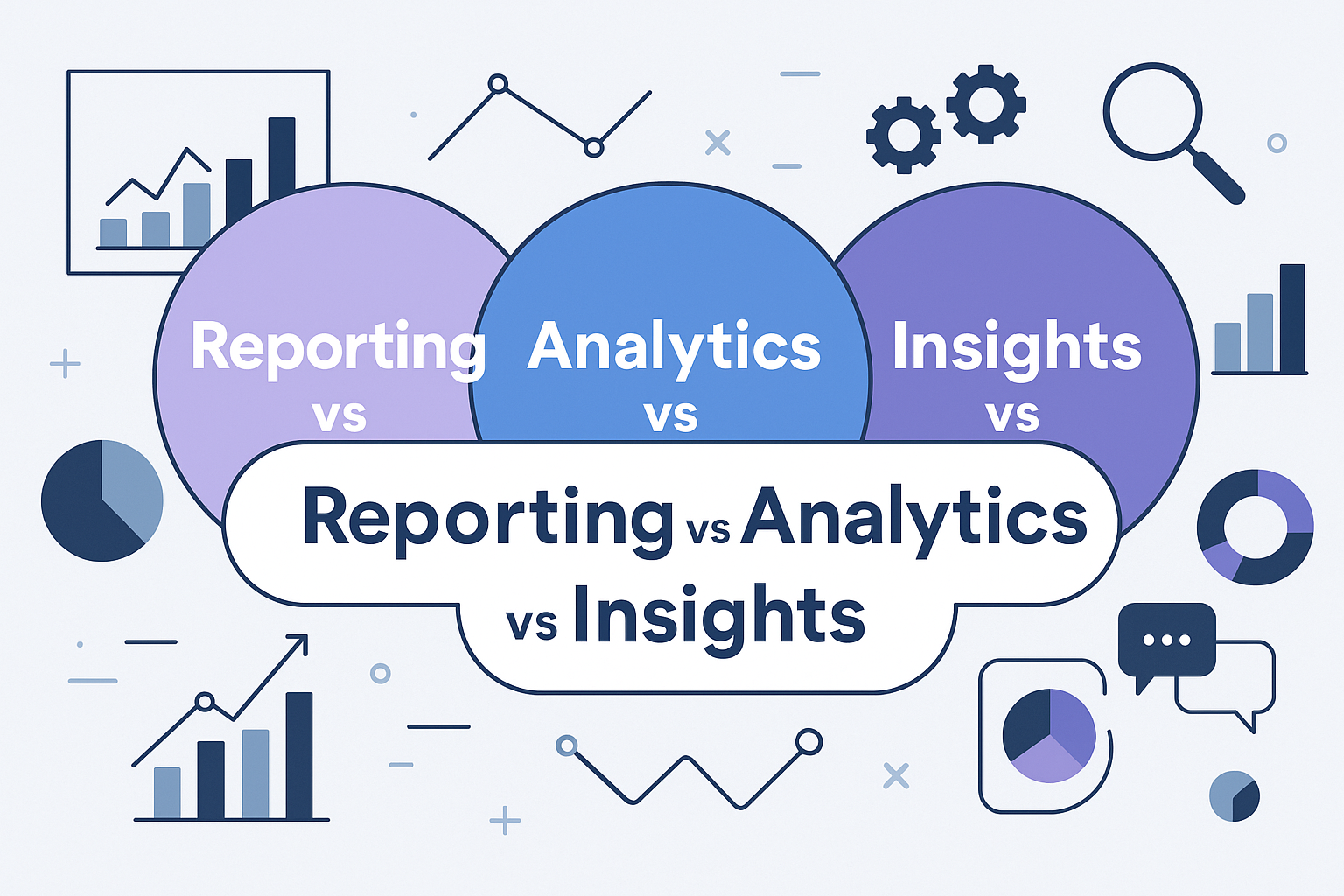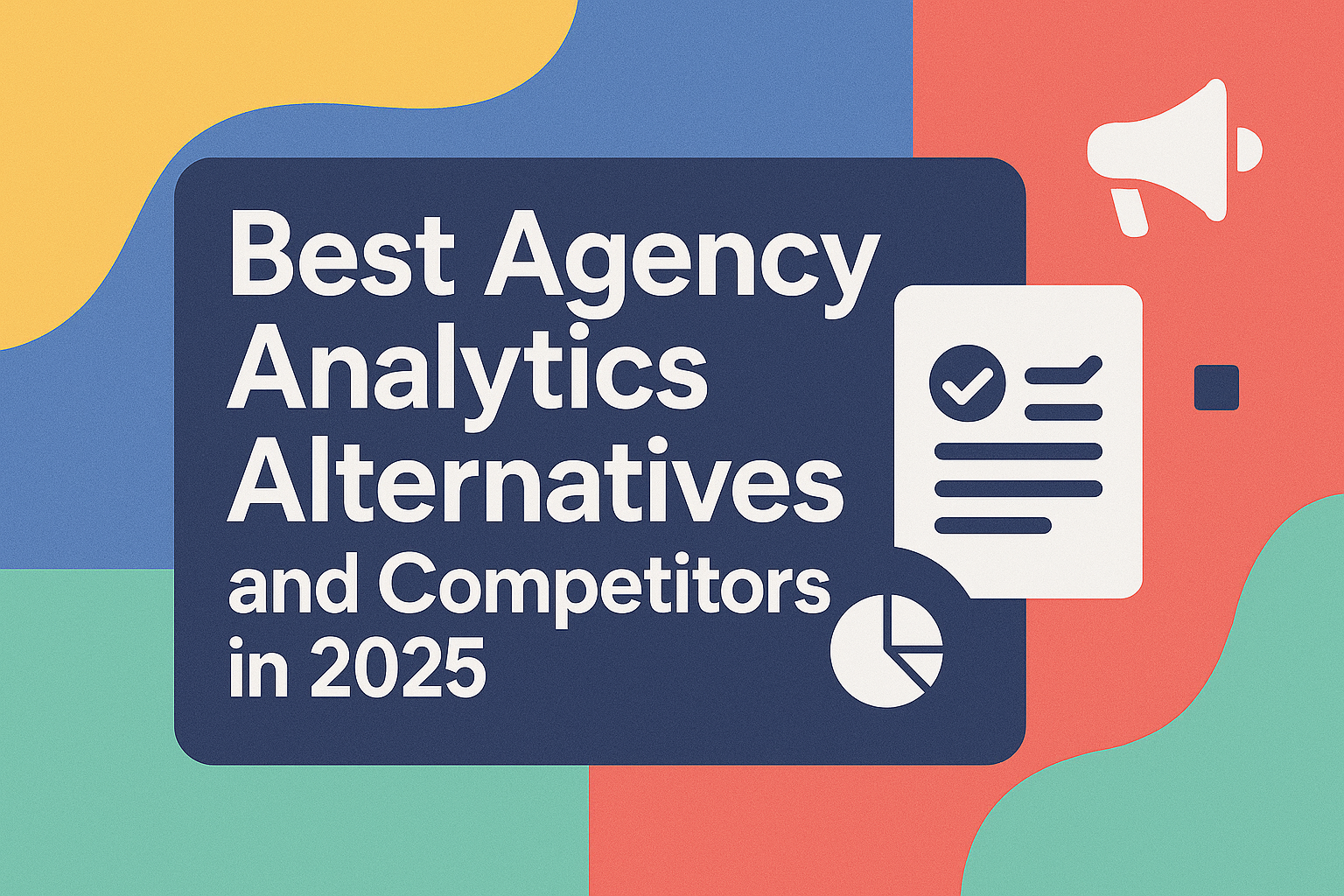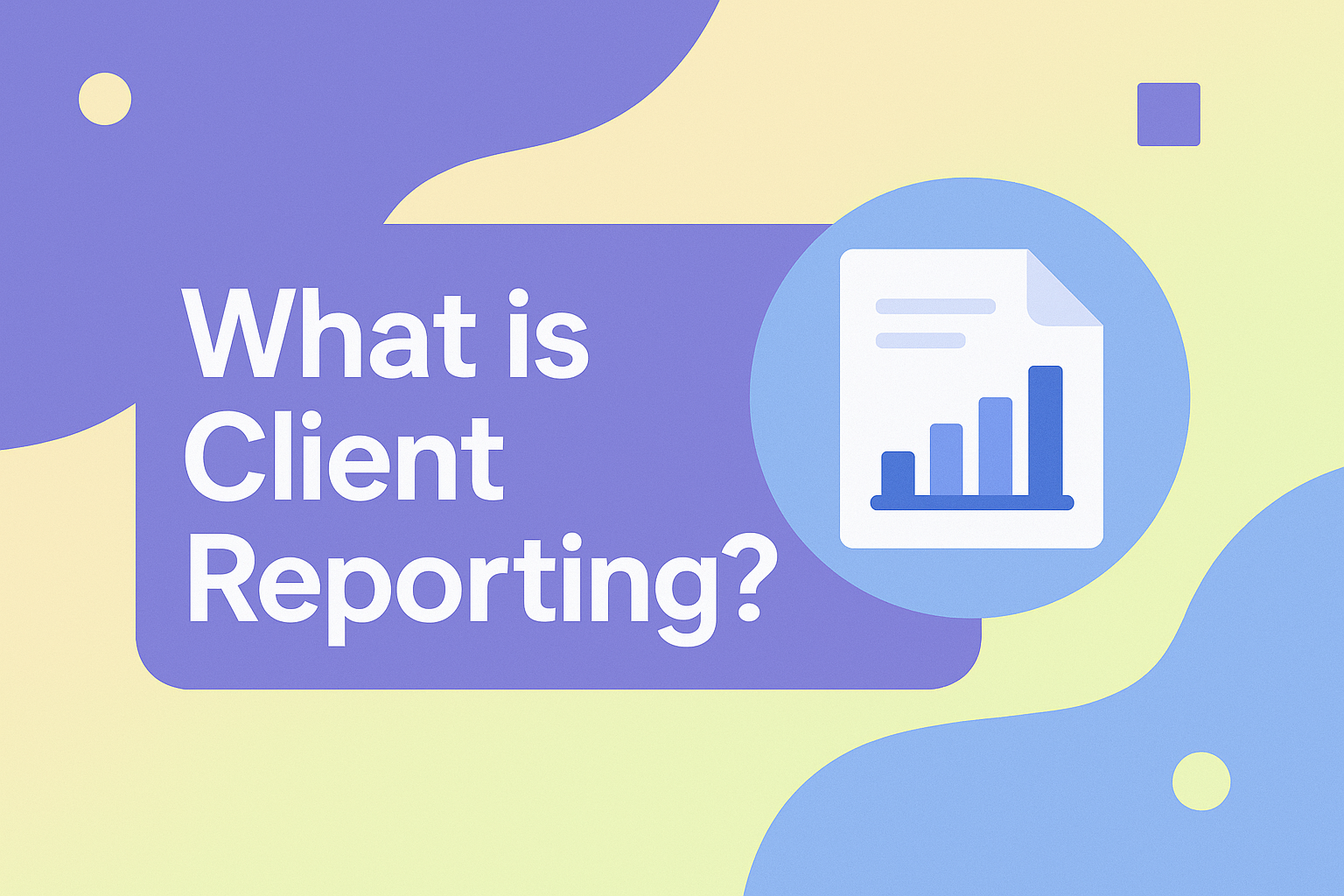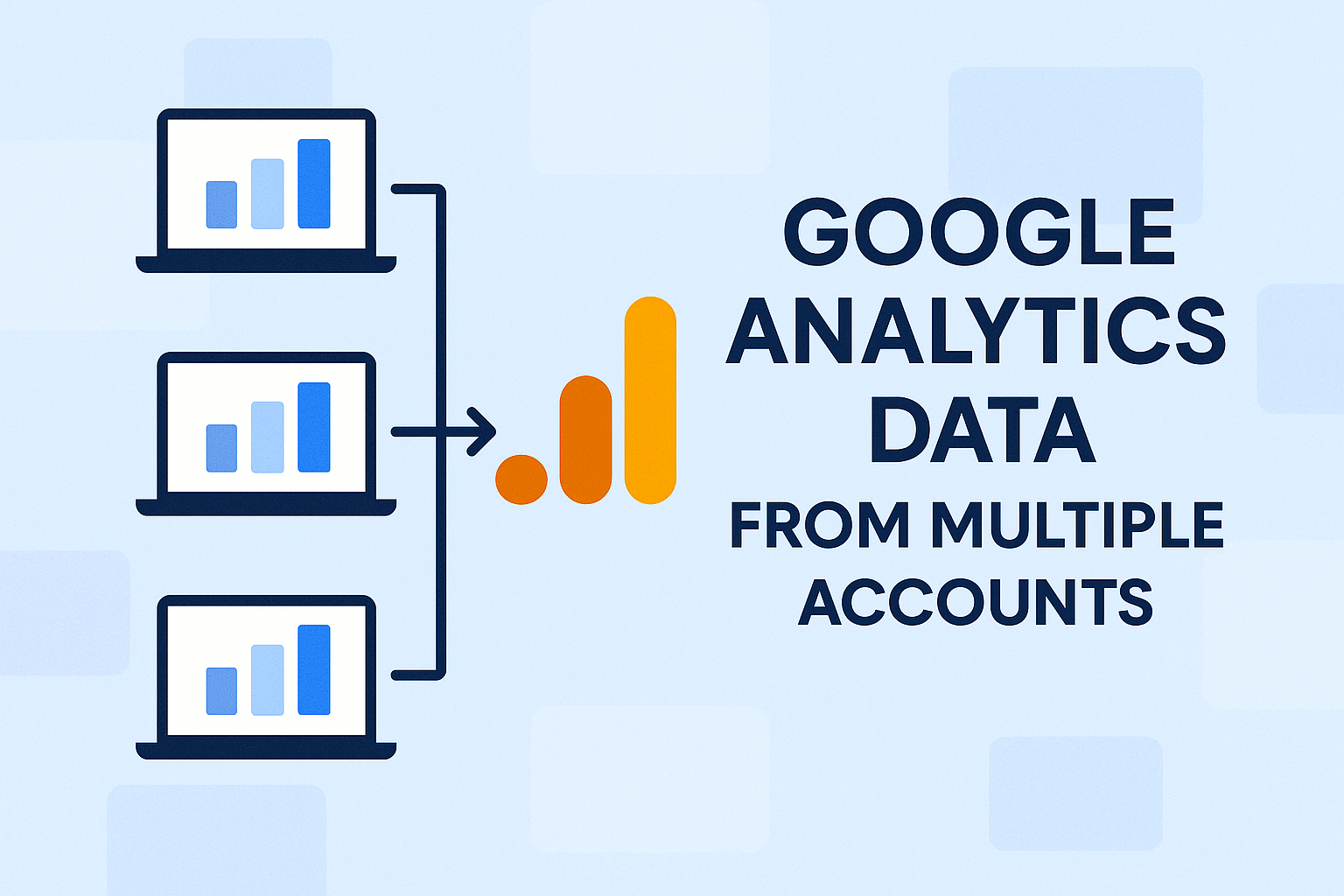6 Best Client Reporting Tools Agencies Love in 2025
Key Takeaways
- By automating and simplifying the reporting process, client reporting tools enhance communication and collaboration while empowering agencies to deliver clear, actionable insights to their clients.
- Powerful capabilities such as customizable dashboards, data aggregation, and integration with other platforms deliver a complete picture of client performance. They provide you with the tools to accurately analyze campaign ROI.
- These tools are invaluable to managing clients’ ever-increasing expectations. They offer unprecedented transparency, real-time updates, and a highly personalized service, and are particularly successful in the increasingly competitive US financial sector.
- Transitioning to more current reporting solutions will not only allow agencies to remain compliant with evolving US regulatory requirements, but will improve efficiency and competitiveness.
- Choosing the best tool means looking at key functionalities, integrations, security features, and cost to figure out what makes the most sense for your agency.
- To maximize value, agencies should balance automation with human insights, tailor reports to evolving goals, and follow reporting best practices for ongoing client satisfaction.
Client reporting tools are software platforms that help agencies and teams pull, track, and share marketing data with clients in one spot. These tools present campaign performance, trends, and important metrics in user-friendly dashboards or reports. This way, progress is easy to digest and clients can stay up-to-date with their campaigns.
Besides changeable templates, most tools will include built-in templates and easy layout change options. For agencies in the United States, choosing the right tool can help save time. It also ensures that clients remain in the loop regarding their marketing efforts.
What Are Client Reporting Tools?

Client reporting tools are software that allow marketing agencies and in-house teams to create and distribute professional client reports for their clients. These tools automate the client reporting process by pulling in data from various sources, such as Excel spreadsheets, Google Analytics, Facebook Ads, etc.
Instead of only displaying simple tables or extensive lists of information, they convert that data into digestible dashboards or dynamic reports. This means agencies and teams can track marketing performance, show results, and share progress without spending hours on manual data entry or combing through spreadsheets.
These tools do a lot more than just help you save time; they improve client communication. Concise and aesthetically pleasing data helps clients quickly recognize how their marketing campaigns are performing.
It allows them to identify areas where progress must be improved. Agencies should use client reporting tools to set a cadence of communication. In turn, clients are never left in the dark regarding the performance of their campaign.
For instance, marketing departments could present SEO development, PPC returns, or social media interactions—all in one dashboard. This transparency ensures that everyone is aligned throughout the process and goes a long way in establishing client trust.
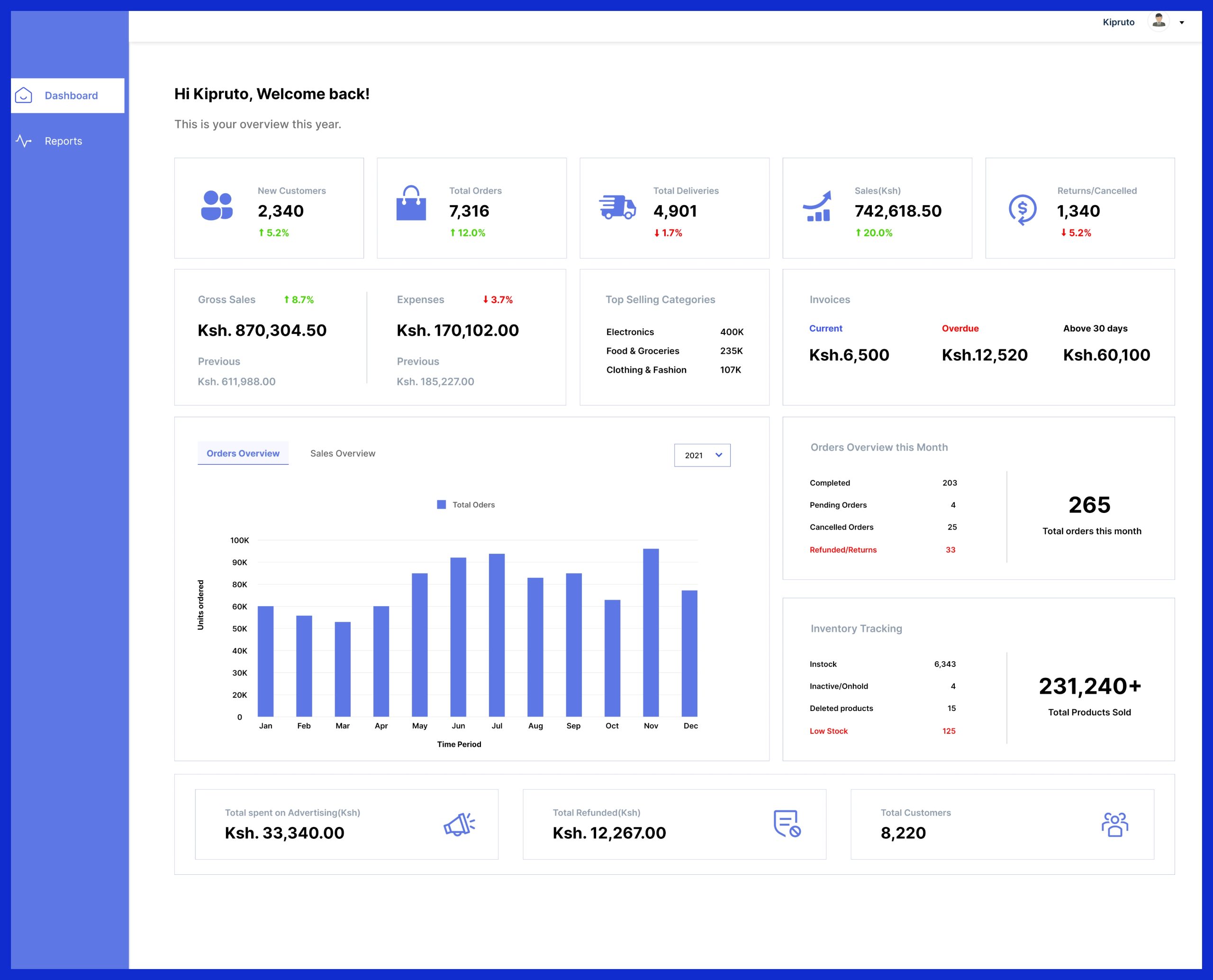
Client reporting tools don’t just measure the right numbers, either. They allow teams to identify trends, indicate seasonal changes, and pinpoint what’s producing measurable business outcomes.
By tailoring reports, agencies can eliminate the clutter and focus on the metrics that truly matter. Tools that offer features such as KPI tracking, real-time updates, and automated report scheduling allow teams to be more efficient and make fast, informed decisions.
In summary, these tools help connect the dots between data and true insights. They assist agencies and clients in more informed decision-making collaboratively!
Beyond Basic Analytics Dashboards
Beyond Basic Analytics Dashboards, thankfully, most client reporting tools go beyond just providing basic charts or tables. Their platforms have customizable dashboards where users select what metrics they want to view—whether that’s leads, spend, conversions, etc.
Colorful visuals like graphs and charts make it easy to interpret data at a glance. Clients and internal teams alike will be able to easily identify highs, lows, and trends!
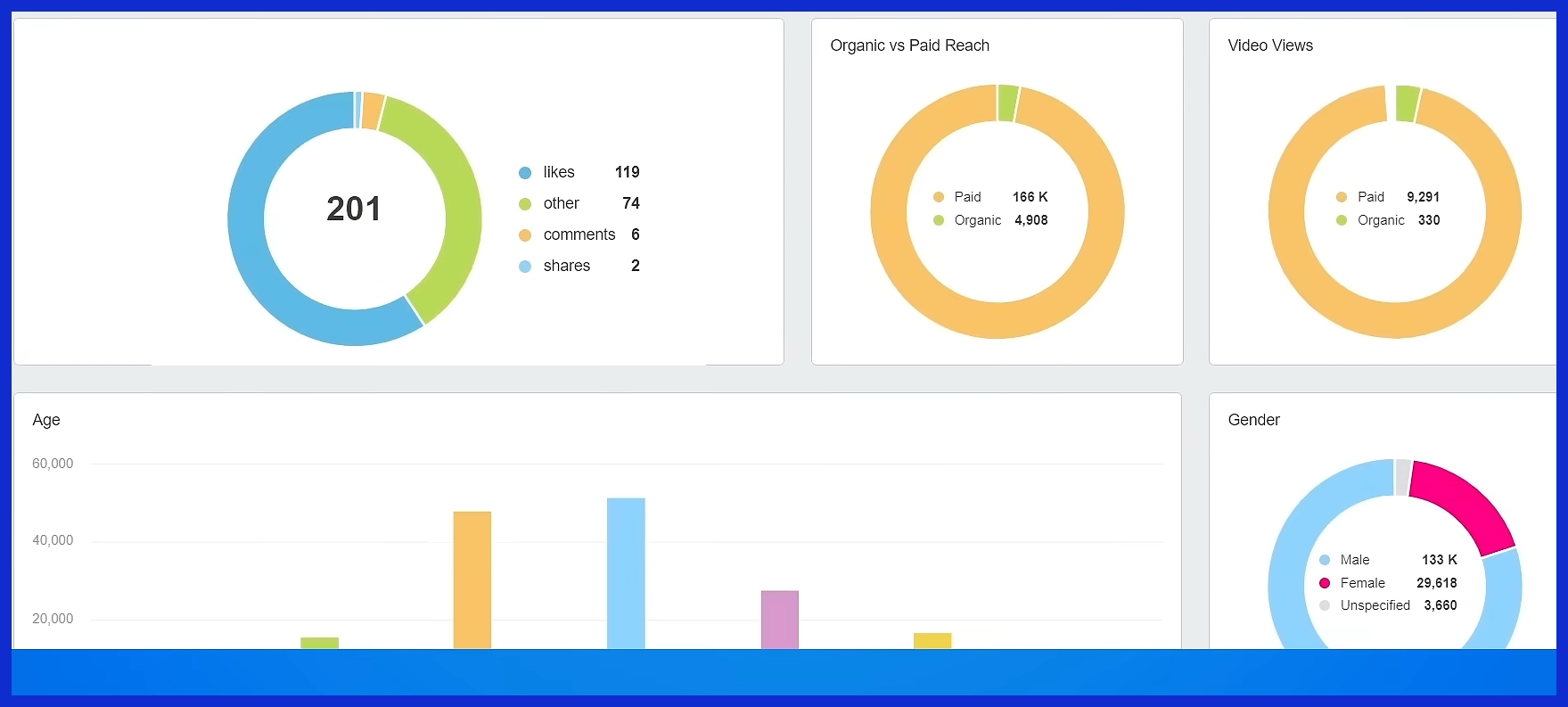
Other tools aggregate data from multiple sources simultaneously, mixing website traffic with ad performance and social stats in one dashboard. This big picture view gives agencies the ability to monitor ROI for each individual channel.
It helps them see which campaigns are delivering the greatest results and adjust strategies accordingly.
Core Functions: More Than Numbers
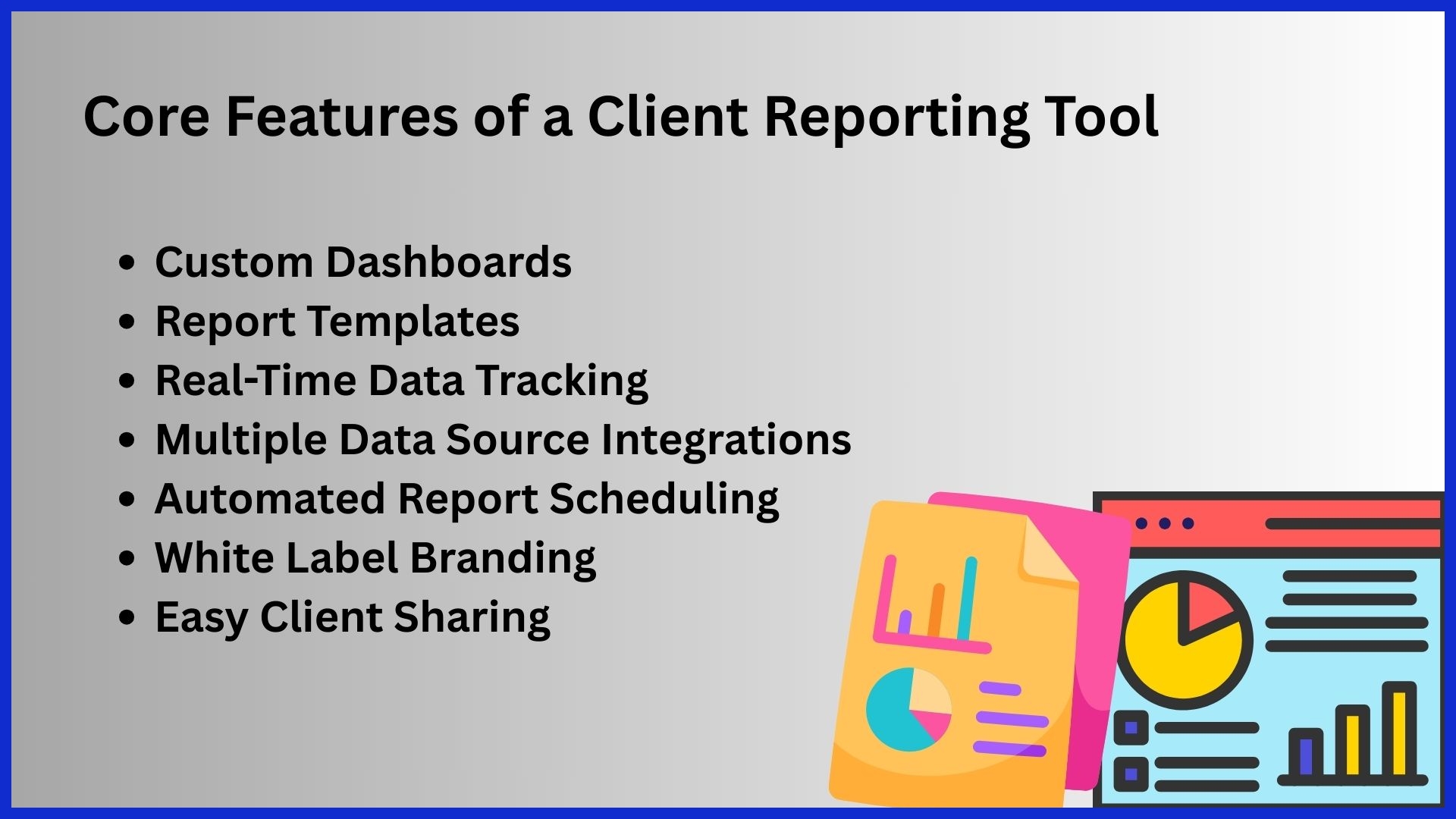
The best client reporting tools go far beyond just tracking clicks and likes. It’s not just the aesthetics—they aggregate data from several different sources. They monitor advancement through time and present findings in formats that are simple to understand.
Accountability for All Teams is able to create customized reports on an individual-client basis, illustrating the work completed and outlining the next steps. With real-time updates, you can ensure everyone is working from the newest data, meaning decisions aren’t being made off of last month’s data set.
With features such as KPI tracking, teams are much more able to remain aligned on what truly matters. They track progress vs. Client goals and take informed action when the landscape changes.
Data Aggregation vs. Capture Explained
For example, there’s a big difference between pulling in a bunch of data (aggregation) versus selecting specific figures (capture). Data aggregation means pulling info from different places—social, web, ads—into one report.
This provides a high-level overview and allows you to identify trends over time. Data capture is about gathering all the appropriate information. This includes metrics such as conversions and engagement on individual channels, enabling deep, granular analysis.
Good client reporting tools do both: they blend sources for the big picture and pull out the key stats that drive real change. This provides a big picture overview and deep dive that is beneficial to both agencies and clients.
Why US Financial Services Must Adapt
Most importantly, client expectations are shifting quickly in the US. Consumers are looking for more than just a bottom line—they want guidance, transparency, and reassurance that their money is being spent strategically. To be successful in this new landscape, financial services need to fundamentally rethink the way they operate.
With easier access to emerging technology, companies can provide their customers with quicker production of reports and updates in real time. Clients, particularly your high-net-worth ones, desire the deep dive. They want to know how their investments contribute to ESG (environmental, social, and governance) goals.
Outdated methods of reporting simply won’t pass muster any longer. Rather, firms require intelligent solutions that are tailored to the specific requirements of every individual client.
Rising Client Expectations in America
Tactile personal service and fast, straightforward conversation is key now more than ever. Clients are looking for a view into their whole world, not just a piece of it. They want clarity about where their dollars are going and why.
Accountability breeds confidence. Client reporting tools help build trust by providing a complete and transparent overview in simple language. These tools assist with demands for a quicker, more transparent form of communication.
Agencies are required to adapt their approach. No longer are cookie-cutter plans acceptable.
Navigating US Regulatory Demands (e.g., SEC, FINRA)
Navigating US Regulatory Demands (e.g., SEC, FINRA) The SEC and FINRA impose stringent requirements on financial services’ data integrity and distribution. Client reporting tools ensure that every report meets these requirements.
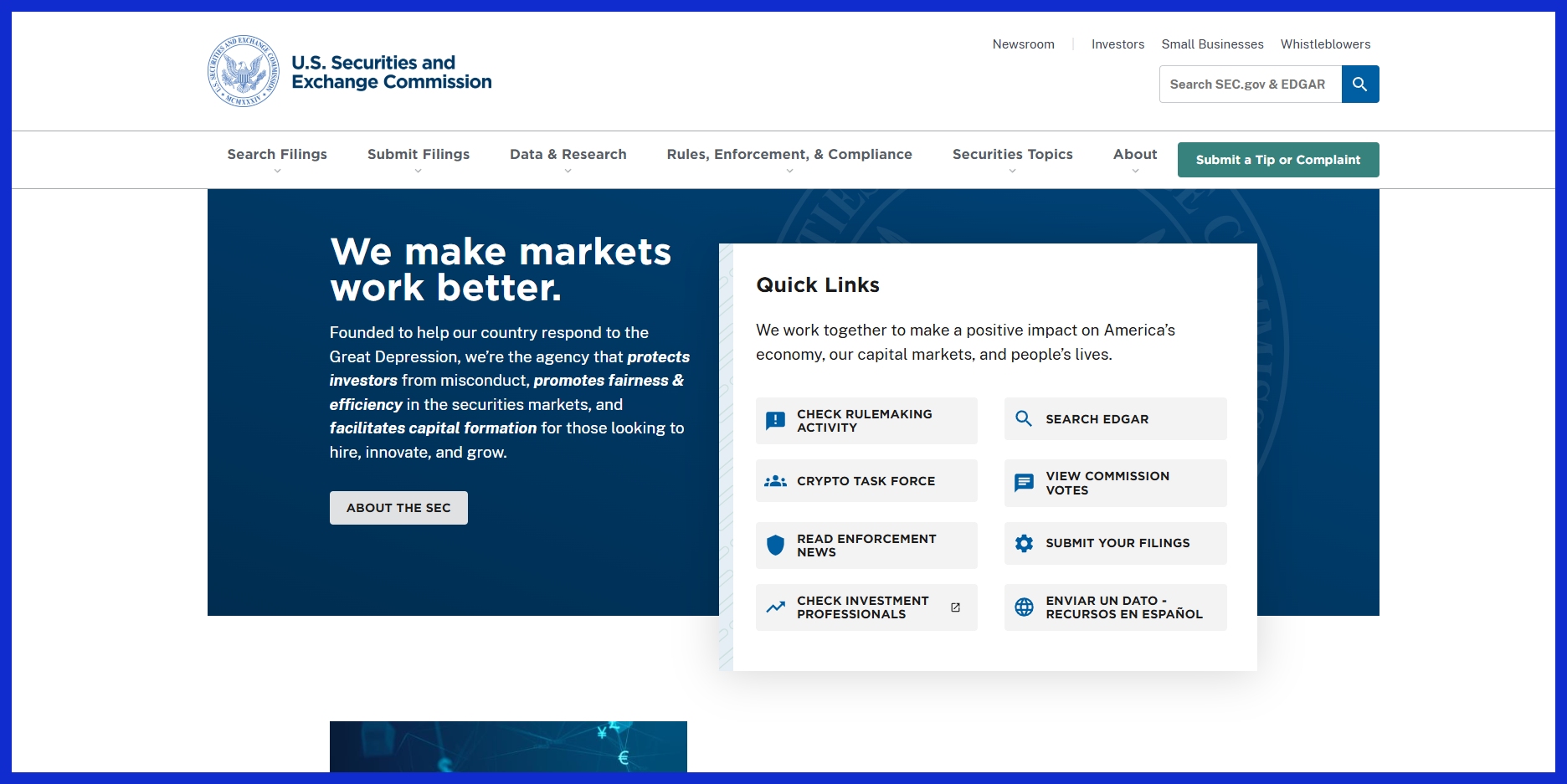
These tools consolidate all relevant records in one place and make them easy to audit if regulators come knocking. It’s what prevents firms from getting hit with fines, and it’s what maintains trust with the client.
Teams need to be proactive in following new or updated rules so they aren’t caught off guard.
The Competitive Edge of Transparency
When firms become transparent about performance and fees, clients pay attention. Dashboards and reporting tools display these results in easy-to-understand tables, graphs, and charts, making it easy for clients to see results at a glance.
Truthful accounting creates loyalty, ensuring that clients always return. Firms that avail themselves of these tools report higher success rates because they can better differentiate themselves in a competitive marketplace.
How Tools Transform Financial Services
Read on to learn how client reporting tools have revolutionized the way US-based financial advisors do business. These platforms automate and accelerate legacy, laborious processes and provide access to innovative solutions that help organizations operate more efficiently.
Advisors have more time to spend on guiding clients towards their goals rather than just pulling numbers.
1. Unlocking New Advisor Efficiency Levels
Tools that automate data pulls, report builds, and updates cut prep time fast—sometimes from days to just 15 minutes per report. This creates the space for advisors to prioritize what matters—improving client outcomes over managing paperwork.
With these systems ingrained into day-to-day operations, advisors are able to work with more clients or focus on plans for their growth.
With mobile dashboards, advisors can access data from wherever they are, allowing for quick responses to be made seamlessly.
2. Revolutionizing Client Communication Clarity
Reports illustrated with appropriate charts and graphs allow clients to quickly grasp the state of their money. Visuals are the antidote, bringing big, complex, or difficult subjects to life.
Providing updates on a regular cadence ensures that everyone knows what to expect and demonstrates that you care about advisors. These white-label features allow firms to slap on their own logo and look-and-feel, creating a seamless, professional experience.
3. Strengthening US Regulatory Compliance

Drafting and reporting tools assist in fulfilling stringent US regulatory requirements by tracking changes, creating an audit trail of edits, and automatically flagging errors. They can automate tests for missing information or unusual trends, preventing potential penalties or failed audits from occurring.
Concise and correct reports are simple to distribute to regulators upon request.
4. Powering Smarter, Data-Backed Decisions
For one, advisors can identify trends and gaps much quicker with dashboards and natural language queries. Getting numbers from every channel under one view helps to show the whole story.
One-click exports to Excel or Google Sheets make custom analysis a breeze.
5. Building Deeper Client Trust

Simple, transparent, and regular reporting builds client loyalty and trust in their advisor. Frequent, easy-to-read updates and two-way feedback foster permanent connections.
Trust is why clients return to you again and again.
Select Your Ideal Reporting Solution
Picking the best reporting tool for your agency begins with understanding your agency’s size and level of assistance required. Every agency has unique needs—some handle hundreds of clients with rotating campaigns, while others require extensive research on specialized reports.
The tool you choose needs to fit within this scope, providing the best combination of features, cost, and user experience. A good reporting solution will make it easier to collect, sort, and analyze data.
Choose solutions that have intuitive, easy-to-use interfaces that allow staff and teams to learn quickly, even if they’re not technical experts. Steer clear of solutions that provide automated, generic, static reports.

Rather, focus on adaptive reporting solutions that allow you to create, modify, and distribute reports on the fly. With strong scheduling options, you can ensure that reports are always delivered on schedule, be it every week, every other week, or month after month.
Must-Have Core Functionalities
Some core functionalities you’ll need are automated data pulls, clear data visualization, and customizable reporting templates. Tools such as KPI.me, for instance, prioritize user-friendly drag-and-drop layouts with intuitive templates that are quick to edit.
Dependable connectivity to other marketing solutions—imagine Google Analytics, Facebook Ads, or even HubSpot—enables one complete, comprehensive picture.
Customization for Diverse Client Needs
Not all clients are looking for the same thing, which is why using the right client reporting tool is essential. Create a fully customizable template and utilize dynamic layouts to adapt professional client reports to suit individual client tastes, increasing client buy-in and showcasing your understanding of their high-level goals.
Critical Integration Capabilities
Seamless integration with various marketing reporting platforms reduces the manual burden and ensures more accurate client reports. Agencies must consider how any reporting solution will integrate with their existing tech stack to prevent data silos.
Ensuring Data Security and Privacy
Ensure data security and privacy by utilizing a robust client reporting tool that includes features like encryption, access controls, and compliance with data privacy regulations, especially vital for agencies handling sensitive data.
Balancing Cost and True ROI
Balance both upfront and ongoing costs with what you receive in return. An affordable alternative, such as KPI.me, provides marketing agencies with a comprehensive client reporting tool that automates reporting, customization, and integration, enhancing long-term business ROI without depleting budgets.
Spotlight: Leading Tools for 2025
Navigating the landscape of client reporting tools might seem daunting, but these tools are rapidly evolving with innovative technology and intelligent features leading the way. In 2025, many digital marketing agencies and SaaS buyers will be on the lookout for marketing reporting platforms that alleviate manual labor. They seek solutions that provide strong data connectivity and impactful, concise reports that are easy to read.
Tools like Ahrefs, Semrush, KPI.me, SurferSEO, Screaming Frog, and Page Optimizer Pro will dominate the market by utilizing automation to aggregate data efficiently, delivering real-time insights that drive success. Choosing the right client reporting tool involves more than just selecting one with the most features; it requires careful consideration of pricing, unbiased user reviews, and how well each tool aligns with your agency’s specific client reporting process.
Ultimately, the right marketing reporting tool will enhance your client management and improve the overall effectiveness of your marketing campaigns. By focusing on comprehensive client reporting and the unique needs of your agency, you can ensure that you are equipped with the best tools to meet your clients’ expectations.
Comparing Key Tool Features
|
Tool |
Data Integration |
Custom Dashboards |
Real-time Tracking |
Unique Feature |
|---|---|---|---|---|
|
Ahrefs |
Yes |
Yes |
Yes |
Deep backlink analysis |
|
Semrush |
Yes |
Yes |
Yes |
Top keyword research |
|
KPI.me |
Yes |
Yes |
Yes |
AI-powered automation |
|
SurferSEO |
Yes |
Yes |
Yes |
Content optimization |
|
Screaming Frog |
Limited |
No |
No |
Site crawling |
|
Page Optimizer Pro |
Yes |
Yes |
No |
Budget-friendly plans |
Feature sets make or break whether a tool works with your workflow. All-in-one trackers Ahrefs and Semrush steal the spotlight with their robust data. KPI.me is remarkable for the simplicity of its AI-fueled onboarding.
Seeing features compared side by side helps you identify the one that will be the best fit for your team’s unique needs.
To make you understand more, here’s a simple and clear summary of each tool, highlighting their core features and unique selling points:
Ahrefs

Integrates data across SEO metrics with custom dashboards and real-time tracking.
Unique Feature: Industry-leading backlink analysis for in-depth link strategy.
Semrush
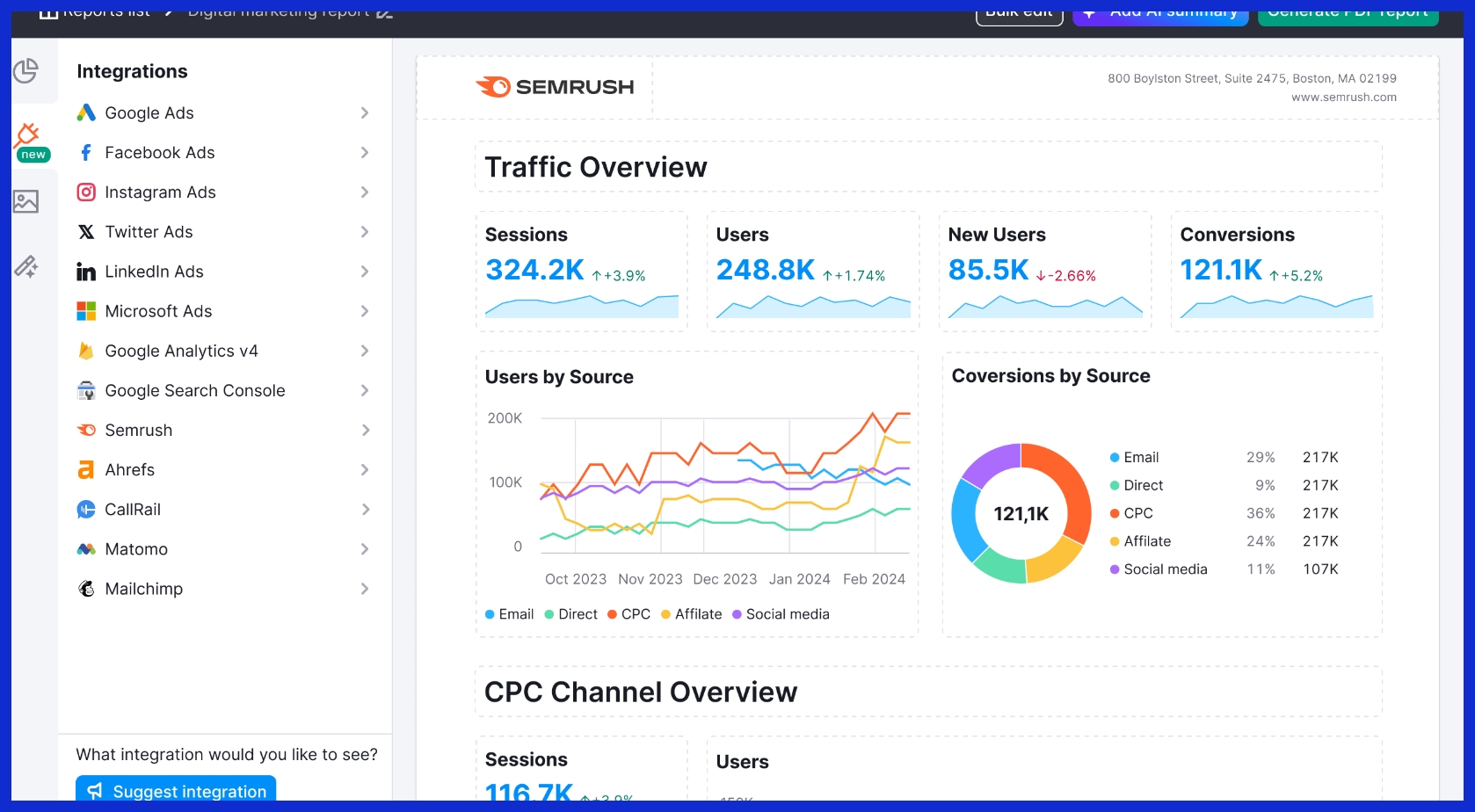
Offers strong integrations and dashboards with live SEO data. Unique Feature: Powerful keyword research tools trusted by marketers worldwide.
KPI.me
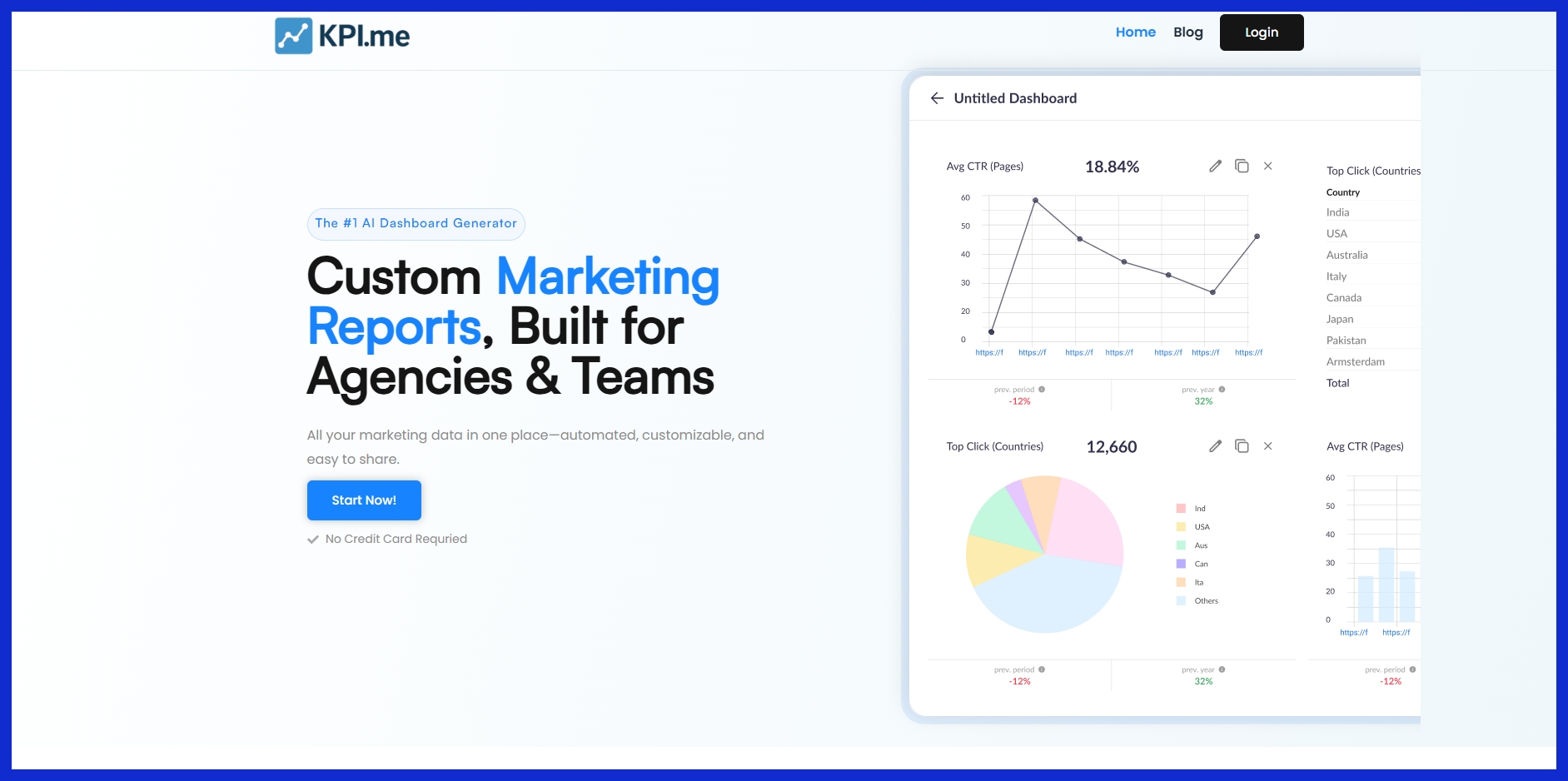
Combines real-time tracking, integrations, and dashboard customization. Unique Feature: AI-powered automation for smarter and faster reporting.
SurferSEO
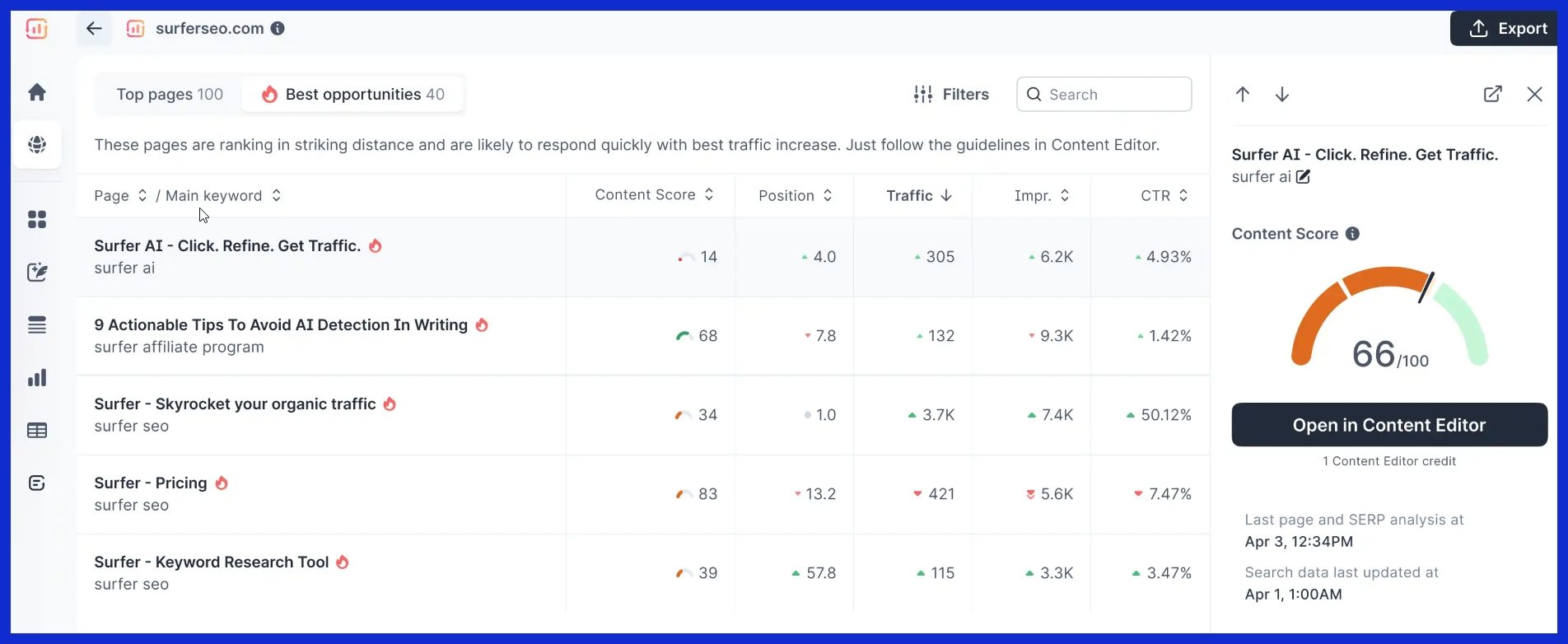
Provides full SEO data integration and live dashboards.
Unique Feature: Advanced content optimization suggestions based on SERP data.
Screaming Frog

Limited data integration, with no real-time tracking or dashboards. Unique Feature: Fast, technical site crawling is ideal for SEO audits.
Page Optimizer Pro

Supports essential integrations and dashboards but lacks real-time tracking. Unique Feature: Budget-friendly SEO tool with powerful on-page optimization features.
Evaluating Pricing and Free Trials
- KPI.me: Low-cost, free trial, monthly plans
- Ahrefs: Tiered pricing, no free plan
- Semrush: Tiered, limited free trial
- SurferSEO: Subscription, free trial
- Screaming Frog: Annual license, free version
- Page Optimizer Pro: Low-cost, free trial
Understanding pricing from the outset to prevent bill shock is crucial. Pricing is an important consideration for any organization. Always be sure to align your selection with your budget and the number of clients you serve.
Highlighting KPI.me and Others
KPI.me unifies all marketing data into one place, and AI helps ensure the setup process is seamless. It’s designed to help agencies save time and money. KPI.me’s unique position among leading tools is its focus on accessibility through usability and affordability.
It allows you to create custom dashboards and data pulls. User reviews consistently highlight its ease of use and the bang for your buck. Side-by-side comparisons, informed by feedback and real-world use cases, allow agencies to easily identify the best fit for their desired style of reporting.
What Differentiates Top Performers
The best reporting tools feature user-friendly dashboards, consistent tracking, prompting notifications, and helpful customer support. Quick turnaround times and innovative new capabilities have them leading the pack.
Agencies need tools that are reliable on a daily basis, that make managing and manipulating data easy, and that allow teams to work quickly and efficiently.
Maximize Your Reporting Tool’s Value
Maximizing the value of a marketing reporting tool involves going beyond simply using the tool’s basic features. Agencies that take the right approach will have a significant advantage. This can change not only their internal processes but also transform how their clients perceive their value. Understanding the client reporting process is crucial for everyone involved.
Whatever tool you choose, knowing how the pricing model works is important for everyone. Subscription, one-time, or usage-based, it allows you to plan and budget for the maximum value. Continued training equips teams to address technical challenges. Having immediate access to these kinds of support not only simplifies the process of learning a new graphics or reporting dashboard!
Integrating data from sources like Google Analytics, Google Search Console, and Google Tag Manager brings a big-picture view. This lets agencies show real growth, track non-brand traffic, and measure backlink quality. Real-time widgets and interactive dashboards give clients a clear, up-to-date snapshot, cutting down on confusion and saving everyone time.
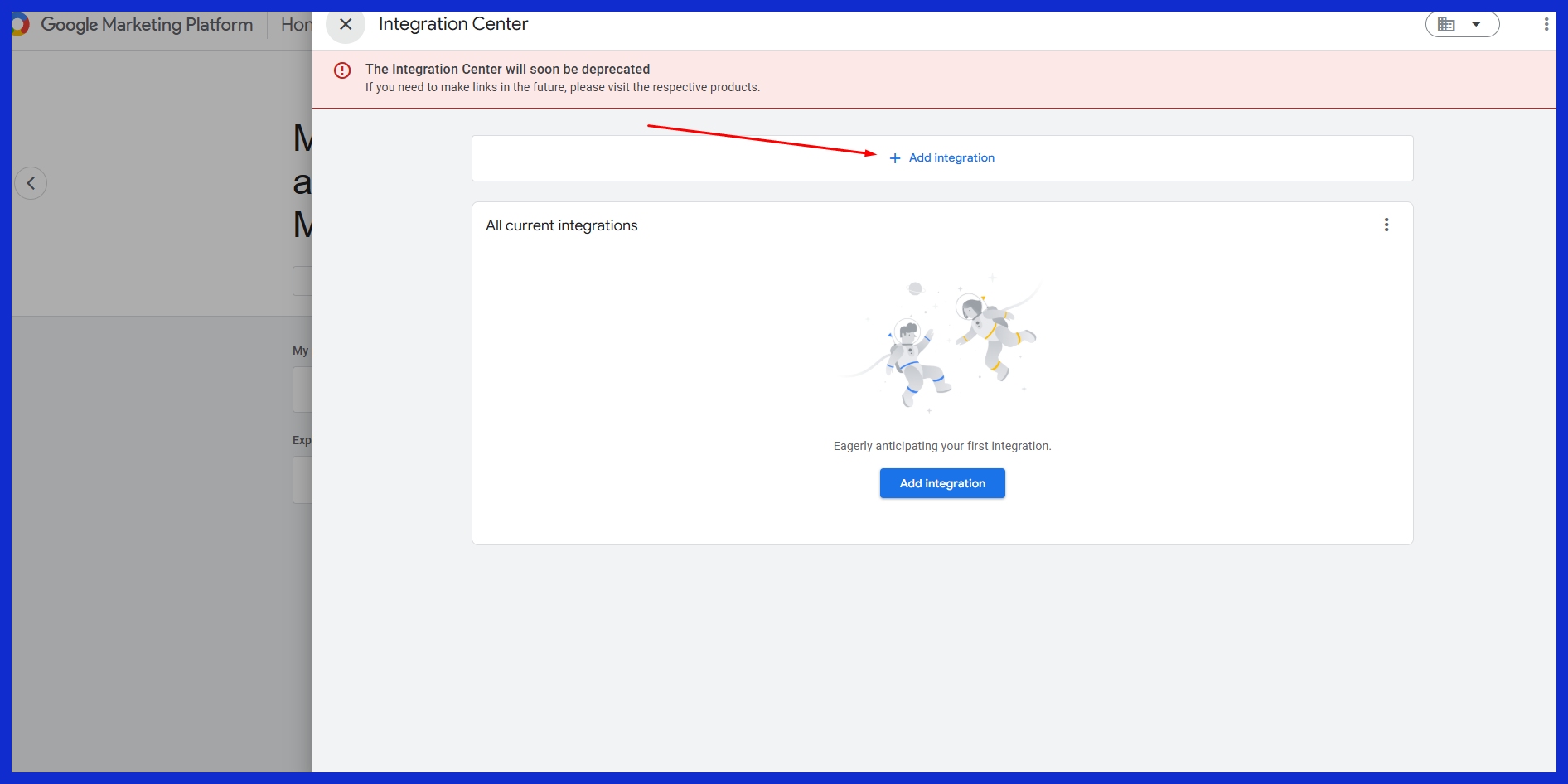
Automating reports—daily, weekly, or monthly—streamlines agency operations. Tools like Scorecard or visualized dashboards from Excel files give clients more insight without extra work. Custom schedules for sending reports, as well as white-label delivery options, allow agencies to maintain their own branding on the client experience.
This brings a layer of trust and intimacy to every report. Agencies need to continuously evaluate the effectiveness of the tool and amend processes based on feedback from the team and clients. Being nimble—changing reports when priorities change—and implementing effective data visualization allows business clients to grasp their results quickly.
Additionally, providing regular updates ensures that reports remain timely and helps maintain a healthy flow of communication.
Conclusion
Client reporting tools allow teams to eliminate busywork and better inform clients. Tools like KPI.me give everyone in US finance the power to consolidate all their client data into one location. As a result, reports go out fast and flawlessly!
Choose solutions that fit your firm’s genuine requirements—avoid wasting money on features you won’t utilize. A proper smart setup equals less stress, fewer errors, and more satisfied clients. Identify opportunities to leverage your tool’s features, such as developing templates or using shareable links, to streamline each step.
Having the right reporting tool means you’re doing less time-consuming grunt work and more time building trust. Curious to see how much easier it becomes? Test KPI.me for your next set of reports and avoid the previous migraines.
Frequently Asked Questions
What are client reporting tools?
Client reporting tools, such as robust client reporting software, are essential for businesses to create, manage, and share professional client reports efficiently. They simplify the client reporting process, improving transparency and communication in digital marketing campaigns and decision-making.
Why are client reporting tools important for US financial services?
US financial services require accurate, timely client reports to meet regulations and client expectations. Utilizing the right client reporting tools becomes essential in an evolving and competitive marketplace, where compliance, trust, and client experiences are critical.
How do client reporting tools improve efficiency?
These marketing reporting tools allow you to automate data gathering and report creation, which means you save time and avoid manual errors. They free up teams to spend more time on analysis and building client relationships, rather than slogging through cumbersome administrative tasks.
What features should I look for in a client reporting tool?
Some of these features may include customizable templates, real-time data integration, and user-friendly dashboards, which are essential for a robust client reporting tool. These attributes contribute to creating clean, professional client reports that are ready to share.
Are there client reporting tools designed for small businesses?
Are there client reporting tools made specifically for small businesses? These marketing reporting tools are incredibly intuitive, featuring the essential client reporting features needed, making them perfect for small financial enterprises or new companies in the United States.
Can client reporting tools help with regulatory compliance?
Client reporting tools, especially the right client reporting tools, can definitely help with that. Most client reporting platforms have native compliance checks built in, providing detailed, customizable templates that meet US financial regulatory requirements to avoid expensive mistakes and fines.
How do I maximize the value of my client reporting tool?
Ensure your whole team is trained on the right client reporting tools, take advantage of any automation features available, and keep your templates updated. Connect the marketing reporting platform with your primary systems to create a more efficient workflow and provide deeper, more impressive insights to your clients.


